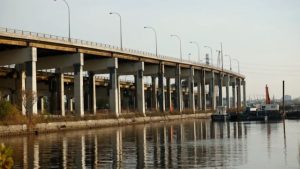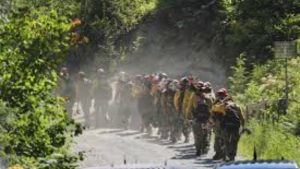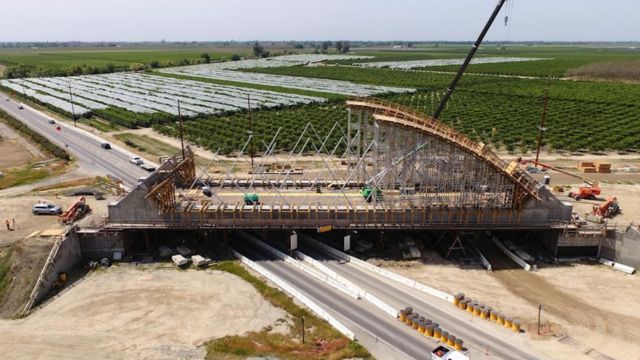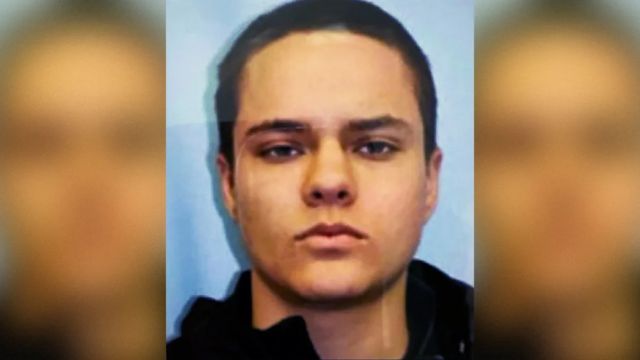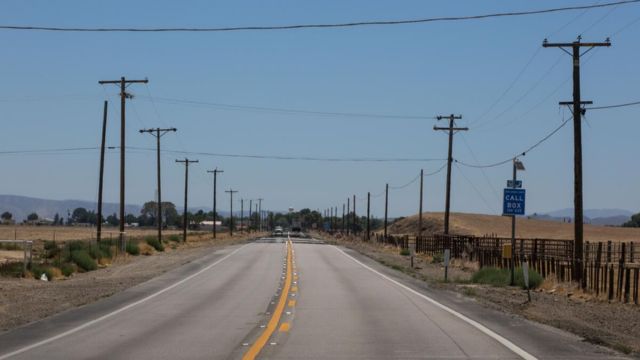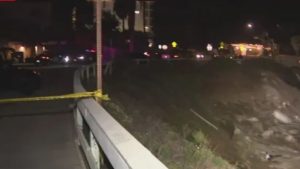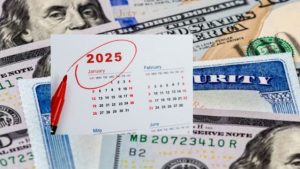SACRAMENTO, Calif. — A long-delayed project that wants to build constant rail service between San Francisco and Los Angeles in less than three hours may be able to get the private funding it needs if California agrees to repay the investors, the project’s CEO told The Associated Press.
Ian Choudri was named CEO of the California High-Speed Rail Authority in August. He is in charge of bringing the country’s biggest infrastructure project back to life, even though costs are going through the roof and there are new worries that the Trump administration might take $4 billion in government funding away.
Choudri said, “We started this one, and we are not succeeding.” He spoke about what drew him to the job after working on high-speed systems in Europe. That was the main reason I said, “Let’s go in, turn it all around, and put it back where it should have been.” Take care of all the problems, make sure the money stays stable, and show the rest of the world that we will do what we say we will do.
In 2008, voters agreed to give $10 billion in bond money to cover about a third of the expected cost. They were told the train would be running by 2020, and they kept their word. Tracks still haven’t been laid five years after the deadline, and Choudri admits that it might take almost twenty more years to finish most of the San Francisco-to-Los Angeles section, even if money is found.
The project now costs more than $100 billion, which is more than three times what was first thought it would cost. People in the state approved a bond and used money from their cap-and-trade scheme to pay for most of it. A little less than a quarter of the money came from the White House.
About $13 billion has already been spent by the government. The state has used up all of its bond money, and the inspector general’s office in charge of the project says that a financing plan for the Central Valley section needs to be made by the middle of 2026.
“The project managers were in trouble from the start because they never had the financing—certainly not stable and predicting financing—that they would have needed to run the project well,” said Lou Thompson, who is in charge of a group that looks at the state’s high-speed rail plans.
He said that if they lost money from the federal government, they would have to “really hard rethink what do we do to survive the next four years.”
Choudri said that rail leaders are talking with Gov. Gavin Newsom’s office and state politicians about what needs to be done to get private investment. He also said that if the state doesn’t get private investment, it might have to borrow money from the federal government or issue new bonds. Private investors were interested in the project at an industry meeting in January, but they want some kind of security, he said.
Choudri is asking Newsom and politicians to think about a plan that would require the state to repay private investors, maybe with interest. The state would have more time to pay for it.
The Democrats in the legislature say they are still hopeful about the project’s future. But so far this year, they haven’t put forward any plans in the state legislature to set aside more money, and they have fought against spending more money on the project in the past.
Choudri is going to give lawmakers a new schedule and price tag this summer.
Choudri wants to follow through on the original plan to create a groundbreaking system—one that is already popular in Asia and Europe—that boosts economic growth, cuts down on greenhouse gas emissions from cars and planes, and saves drivers hours on the road.
At speeds of up to 220 miles (354 km) per hour, it would be the fastest way to move on the ground in the country.
The Acela train from Amtrak goes to big towns like New York, Boston, and Philadelphia at speeds of up to 150 miles (241 kilometres) per hour. From Orlando to Miami, there is another train line in Florida that runs at up to 125 miles per hour (201 kilometres per hour).
A mostly privately funded high-speed rail system is being built to connect Las Vegas to Southern California.
California’s building is still a long way from being done. In the Central Valley, work is being done on 119 miles (192 kilometres) of tracks, but only 22 miles (35 kilometres) are ready for the track-laying phase, which won’t begin until next year.
It’s not enough to just finish the queue in the Valley. Once that is done, the train needs to go farther north to the San Francisco Bay Area and farther south to Los Angeles. To reach Gilroy, which is about 70 miles (113 km) southeast of San Francisco, Choudri plans to build. With the way public transport works now, you would have to change trains at least once more to get into the city.
He wants to build all the way to Palmdale, which is 37 miles (60 kilometres) northeast of Los Angeles. It takes more than an hour to drive or two hours on a train to get to Los Angeles from there.
“Everyone would be happy if you could drive 500 miles, build it in your warehouse, and then just drop it,” Choudri said. “But that’s not how the programs are made.” You build little by little, which is what we’re doing now.
Lack of faith in the future
Some people are against the project because they think it will never be finished and that it could leave tall, useless equipment in the middle of the state’s farming country. To keep the train line safe from the existing roads, more than 50 structures have already been built. These include underpasses, viaducts, and bridges.
Republican state Sen. Tony Strickland, who is vice chair of the Senate Transportation Committee, said, “We’ve spent billions of dollars and really no tracks have been laid.”
Doug Verboon, chair of the Kings County Board of Supervisors, has been to court against the High-Speed Rail Authority because the project caused farms to lose land. He said that the people who should be most upset about the delays are those who have supported the project for a long time.
“It doesn’t look like the state government needs to finish it right away,” he said.


